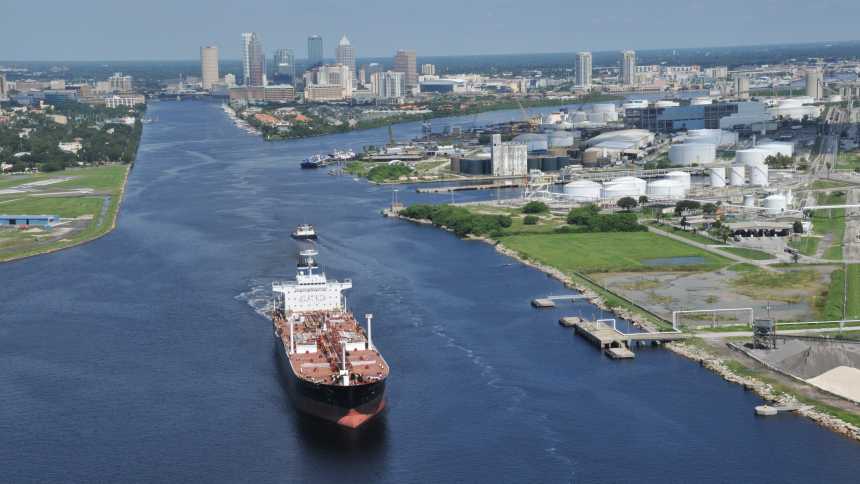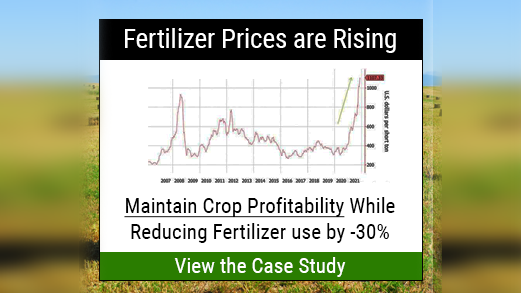Scale of NAFTA Weighing Down on Florida Farmers

Photo courtesy of Port Tampa Bay
It has been more than a year in office for the Trump Administration, and it’s time to assess where we are relevant to election year promises on trade. The Administration made progress on its promise to negotiate new terms in the North American Free Trade Agreement (NAFTA) with Canada and Mexico. NAFTA was implemented in 1994. Since then, we have seen large shifts in agricultural trade, helping some U.S. subsectors like grains and livestock while devastating others like fresh fruit and vegetables.
Trade was a hot topic on the campaign trail with then candidate Donald Trump promising to renegotiate the terms of trade in NAFTA or take the U.S. out of the agreement. Last May, the Trump Administration notified Congress of its intent to renegotiate NAFTA for purposes of improving the U.S. trade balance and reducing the trade deficit with the NAFTA partners.
As might have been expected, negotiations have been slow to start because of the differing objectives of the negotiators. Florida growers hold out hope they could get relief from the impacts of increased trade on fresh fruit and vegetables. Considering the agreement is with the two largest trading partners of the U.S., it is hard to imagine we would walk away from the agreement. That leads us to wondering how much change can be expected from renegotiation.
In an article published last spring (“Plight of Trade Policy Grounding Many U.S. Growers”), I noted the loss in market share by Florida growers. I remarked that renegotiation of NAFTA could bring more discipline to foreign suppliers of specialty crops, but were not likely to erase the changes brought on after NAFTA.
It would be nice if the Administration was looking out for the best interest of Florida produce growers, but the reality is that manufactured goods like automobiles and parts sit in the front seat of these negotiations.
Trading Places
The Office of the U.S. Trade Representative (USTR) is an Executive Office of the President. The USTR conducts negotiations for the Administration and published objectives for the NAFTA Renegotiations, first in July 2017 and then a revised version in November 2017. The changes in objectives between those dates point to where the focus has been in these negotiations. For agricultural goods, specific products have been identified for attention, those being U.S. dairy, poultry, and egg products; U.S. grain and alcohol beverages; as well as processed foods and beverages.
Grain and livestock growers have benefited from increased trade since NAFTA was implemented in 1994 with a four-fold increase in exports of many farm program crops. U.S. growers have been aggressive in communicating the importance of this trade and those messages have been supported by USDA. That message has gained even more traction as profitability diminished for farm program crops like corn, wheat, soybeans, and dairy products. As a result, farm program payments to U.S. growers are increasing, adding pressure to the already burdensome U.S. national debt.
Bottom line, the rising cost of farm support and larger U.S. budget deficits is likely to make U.S. negotiators cautious. Strategies that cut exports would put more pressure on agriculture and result in costing taxpayers with increased farm program payments.
On the Bright Side
A ray of hope can be seen for fresh produce growers in the objectives listed by the USTR. One objective is to provide reasonable adjustment periods for U.S. imports of sensitive agricultural products, engaging with Congress on such products before initiating tariff reducing negotiations. In addition, discussions have been held on procedures to adjudicate conflicts for seasonal and cyclical perishable crops. It is currently difficult to seek remedies for trade distorting practices for seasonal producing areas of perishable crops. This point has been put forward in negotiations in hopes that seasonal producers could seek timely trade remedies without having to include considerations for impacts on the national market.
The hope was that these renegotiations could be completed by spring 2018. Without serious progress in the coming negotiations, that would seem difficult. A recent newspaper headline indicated that “Florida Agriculture’s Future Hangs on New NAFTA.” That could be true, but probably less so than our investment in technology development.










